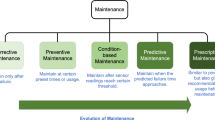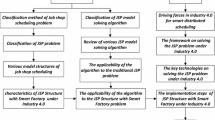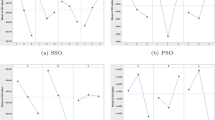Abstract
This research develops dispatching algorithms for a fab with machine-dedication characteristics. Machine-dedication, a new feature in a modern fab, has not been addressed in previous studies of dispatching. Three performance indices, including hit rate, mean cycle time, and throughput are of concern in dispatching. This research develops an algorithm, called LB-SA, based on a proposed simplification model of the process route. The line balance (LB) component aims to smooth the flow rate of the process route; and the starvation avoidance (SA) component aims to ensure that the bottleneck machine is not “starving” and has enough work-in-progress (WIP) to process all the time. Thirty dispatching algorithms, including the LB-SA algorithm, are compared by simulation. The LB-SA algorithm outperforms the other 29 algorithms both in terms of hit rate and mean cycle time, and is only slightly less than the best benchmark in throughput. Of the 29 other algorithms, one algorithm, called CR-SA, also performs very well. These two algorithms are both recommended for fabs with machine-dedication feature.
Similar content being viewed by others
References
Yoon HJ, Lee DY (2000) A control method to reduce the standard deviation of flow time in wafer fabrication. IEEE Trans Semicond Manuf 13(3):389–392
Lee YH, Park J, and Kim S (2002) Experimental study on input and bottleneck scheduling for a semiconductor fabrication line. IEEE Trans Semicond Manuf 34(2):179–190
Li S, Tang T, and Colons DW (1996) Minimum inventory variability schedule with applications in semiconductor fabrication. IEEE Trans Semicond Manuf 9(1):145–149
Lu SCH, Ramaswamy D, and Kumar PR (1994) Efficient scheduling policies to reduce mean and variance of cycle-time in semiconductor manufacturing plant. IEEE Trans Semicond Manuf 7(3):374–388
Kim YD, Lee DH, Kim JU, and Roh HK (1998) A simulation study on lot release control, mask scheduling, and batch scheduling in semiconductor wafer fabrication facilities. J Manuf Syst 17(2):107–117
Dabbas RM, Fowler JW (2003) A new scheduling approach using combined dispatching criteria in wafer fabs. IEEE Trans Semicond Manuf 16(3):501–510
Kim YD, Kim JG., Choi B, and Kim HU (2001) Production scheduling in a semiconductor wafer fabrication facility producing multiple product types with distinct due dates. IEEE Trans Robot Automat 17(5):589–598
Kim YD, Kim JU, Lim SK, and Jun HB (1998) Due-date based scheduling and control policies in a multiproduct semiconductor wafer fabrication facility. IEEE Trans Semicond Manuf 11(1):155–164
Lu SCH, Kumar PR (1991) Distributed scheduling based on due dates and buffer priorities. IEEE Trans Semicond Manuf 36(12):1406–1416
Glassey CR, Resende MGC (1988) Closed-loop job shop release control for VLSI circuit manufacturing. IEEE Trans Semicond Manuf 1(1):26–46
Morton TE, Pentico DW (1993) Heuristic scheduling systems. Wiley, New York
Glassey CR, Resende MGC (1988) A scheduling rule for job release in semiconductor fabrication. Oper Res Lett 7(5):213–217
Wein LM (1988) Scheduling semiconductor wafer fabrication. IEEE Trans Semicond Manuf 1:115–130
Lou SXC, Kager PW (1989) A robust production control policy for VLSI wafer fabrication. IEEE Trans Semicond Manuf 2(4):159–164
Neuts MF (1967) A general class of bulk service queue with Poisson input. Ann Math Stat 38:759–770
Montgomery DC (1991) Design and analysis of experiments. Wiley, New York
Author information
Authors and Affiliations
Corresponding author
Rights and permissions
About this article
Cite this article
Wu, MC., Huang, Y.L., Chang, Y.C. et al. Dispatching in semiconductor fabs with machine-dedication features. Int J Adv Manuf Technol 28, 978–984 (2006). https://doi.org/10.1007/s00170-004-2431-x
Received:
Accepted:
Issue Date:
DOI: https://doi.org/10.1007/s00170-004-2431-x




